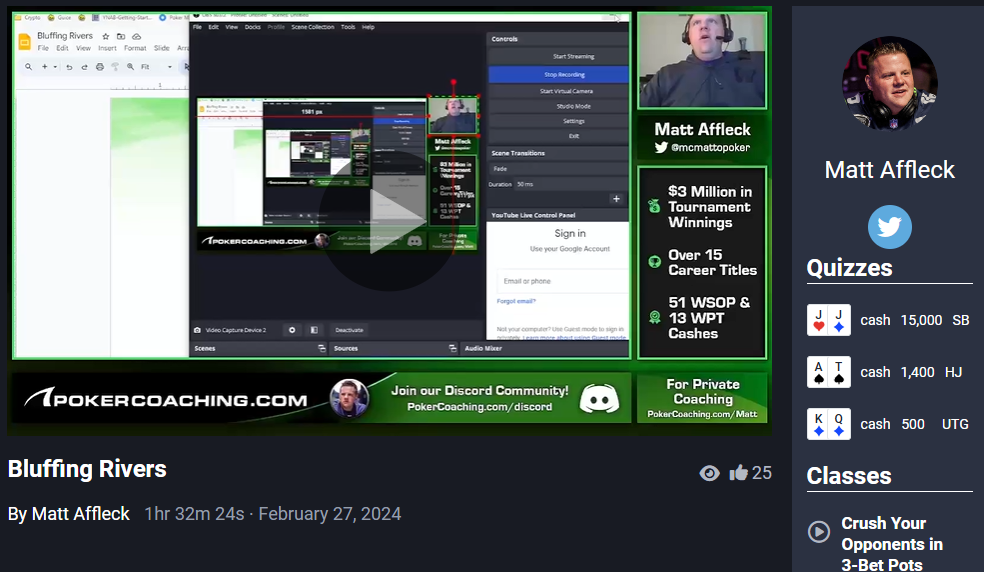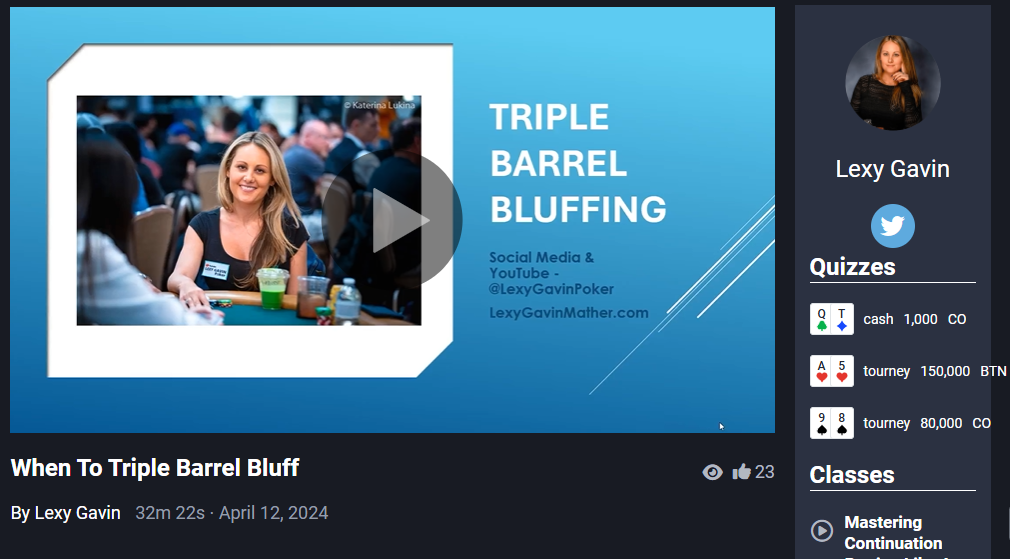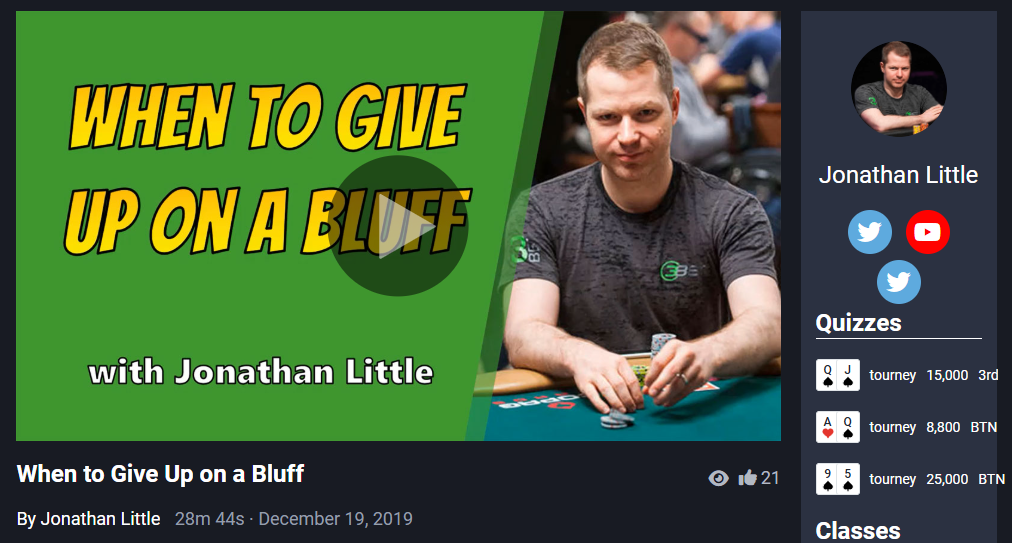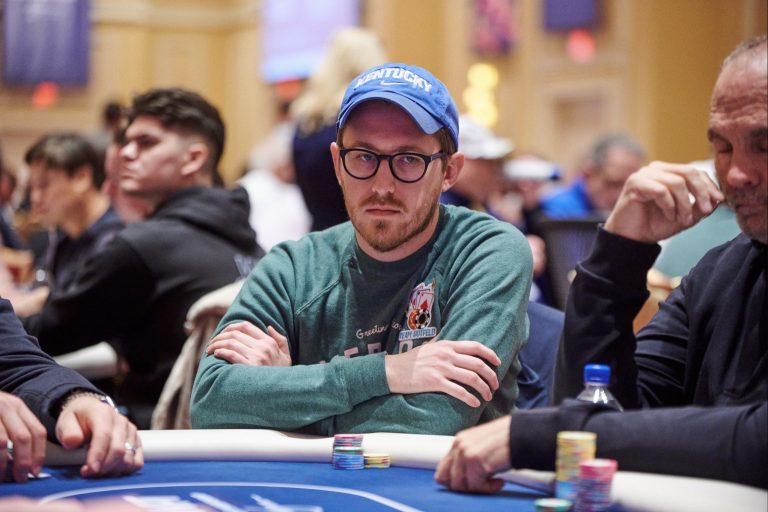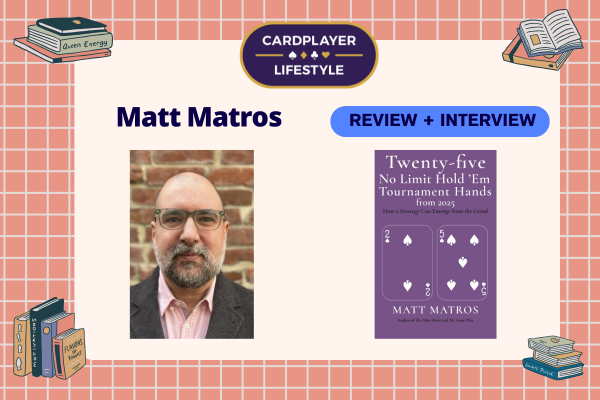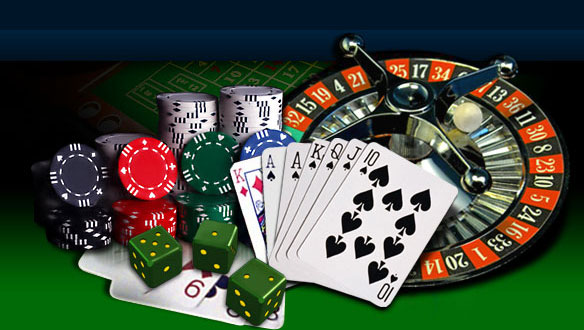Bluffing is one of the most thrilling — and misunderstood — elements of poker. A successful bluff feels like a magic trick, a daring move that forces your opponent to fold the better hand. But for seasoned players and students of the game, bluffing is anything but reckless; it’s a calculated, disciplined part of a comprehensive strategy.
The instructors at PokerCoaching.com have created a suite of video lessons that delve deep into the art of bluffing. This guide summarizes three of those excellent lessons: Bluffing Rivers with Matt Affleck, Triple Barrel Bluffing with Lexy Gavin-Mather, and When to Give Up on a Bluff with Jonathan Little. Together, they form a masterclass in how, when, and why to bluff.
Totaling about 2.5 hours of watch time, we’ll break down the highlights of the three videos for you here. If you’re already a Pokercoaching.com Premium member, you can head there to watch the videos yourself right after you finish this article to brush up on your bluffing. If not, then perhaps when you see how well and comprehensively the three aforementioned coaches explain and instruct about bluffing, you’ll consider signing up for Premium membership.
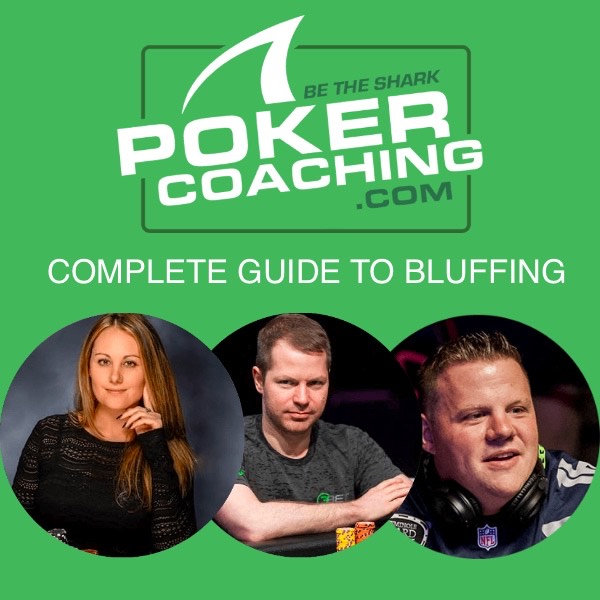
Bluffing Rivers, by Matt Affleck
Are you a Pokercoaching.com Premium Member? If so, you can watch the full video here
Bluffing on the river — the final betting street in flop games like No Limit Texas Hold’em and Pot Limit Omaha — is one of the most nuanced plays in poker. Matt Affleck’s lesson emphasizes that river bluffs don’t occur in a vacuum; they are a logical conclusion of the story you’ve told throughout the hand. If your actions on the flop and turn don’t align with a value hand, then a big bluff on the river is unlikely to succeed. It all comes down to consistency.
One of the core concepts in Matt’s strategy is understanding your opponent’s perceived range. That means thinking not just about your own cards, but about what your opponent thinks you might have, based on your actions up to that point. You must also assess how strong their hand might be, and whether they can credibly fold to a river bet.
Additionally, recognizing when the board changes the nuts is a key to successful river bluffing. Did the river complete a straight or flush? If you can credibly represent those hands — even if you checked earlier streets — you may be able to force folds from better hands. But this only works if your story makes sense. If you checked back the turn on a coordinated board then suddenly move all-in when the river completes a draw, your bluff may not be believable.
Matt also stresses the importance of bet sizing. Large river bets target strong hands, while smaller bets may fold out marginal or medium-strength holdings. You must tailor your bluff size to the part of your opponent’s range you want to target.
Finally, there are no absolutes in poker. A decision that works in one hand might fail in another. Bluffing rivers requires adaptability and a deep read on your opponent’s tendencies.
Triple Barrel Bluffing, by Lexy Gavin-Mather
Are you a Pokercoaching.com Premium Member? If so, you can watch the full video here
Few moves in poker are as bold (or as dangerous) as the triple barrel bluff. Betting flop, turn, and river with nothing requires guts, but more importantly, it requires a keen understanding of perception. Lexy Gavin-Mather’s lesson centers on timing, table dynamics, and the psychology of your opponents.
The most effective triple barrel bluffs occur when you’ve established a tight table image. If you’ve shown down strong hands and have rarely bluffed, your opponents are more likely to give you credit when you fire a third barrel. This makes your range appear value-heavy, even when it isn’t. Opponents who fear they’re always beat by your three-street aggression are more likely to fold medium-strength hands that could otherwise call down.
She also highlights the importance of adjusting to player types. Against fishy players (those prone to calling down with weak hands) you may find more success with well-sized triple barrel bluffs. While these players are curious and love to see cards, they still fold eventually if the price gets too high and their hands aren’t improving. Make them pay for their curiosity!
Conversely, solid opponents who don’t know you well can also be great targets. These players rely on theory and logic. If your line makes sense — say, betting a dry ace-high board across three streets — they may fold strong one-pair hands, assuming you’re representing the top pair or better. The key is crafting a coherent narrative from flop to river that tells the story of a strong made hand.
Ultimately, Lexy’s approach to triple barrel bluffing is a reminder that credibility is your most valuable weapon. Build the foundation of a believable story, and your opponents may fold far more often than you expect.
When to Give Up on a Bluff, by Jonathan Little
Are you a Pokercoaching.com Premium Member? If so, you can watch the full video here
Bluffing can win you pots, but reckless bluffing can cost you your bankroll. Jonathan Little’s video offers a much-needed dose of humility in a world where boldness is often glorified. Knowing when not to bluff is just as important as knowing when to pull the trigger.
One clear red flag is a wild table dynamic. If players are drinking, gambling loosely, or clearly playing for fun rather than profit, bluffing becomes far less effective. These opponents often call down with any piece of the board or just to “see what you have.” In such situations, value betting becomes a more reliable strategy than bluffing.
Jonathan also urges players to pay attention to how turn and river cards impact the board. When scary cards — like a third flush card or a four-liner to a straight — hit the board, you need to reassess your bluffing plans. If you lack the proper blockers, it may be a sign to shut it down. Your opponent may have completed a draw or picked up additional strength that makes folding unlikely.
A vital takeaway from Jonathan’s video is that bluffing is not the solution to every problem. Sometimes you miss your draw, get outflopped, or find yourself up against a calling station. Bluffing in these spots often turns into chip-spewing. As the old saying goes, discretion is the better part of valor. In context, that means that knowing when to wave the white flag and not bluff can save you money and preserve your table image for better spots.
READ MORE: 8 More PokerCoaching.com Coaches & the Skills They’ll Help You Master
Conclusion: Bluff Smart, Not Reckless
The common thread running through all three Pokercoaching.com bluffing lessons is this: smart bluffing is strategic, not impulsive. Whether you’re deciding to bluff on the river, firing a triple barrel, or choosing to check down, your decisions should be based on how well your story lines up with your opponent’s perception of your range.
From Matt Affleck’s nuanced analysis of river textures and bet sizing, to Lexy Gavin Mather’s exploration of image and psychology, to Jonathan Little’s practical guide to self-restraint, the message is clear: bluffing is a tool, not a crutch.
By integrating these concepts into your game, you will be able to bluff with confidence, discipline, and, most importantly, profitability.

